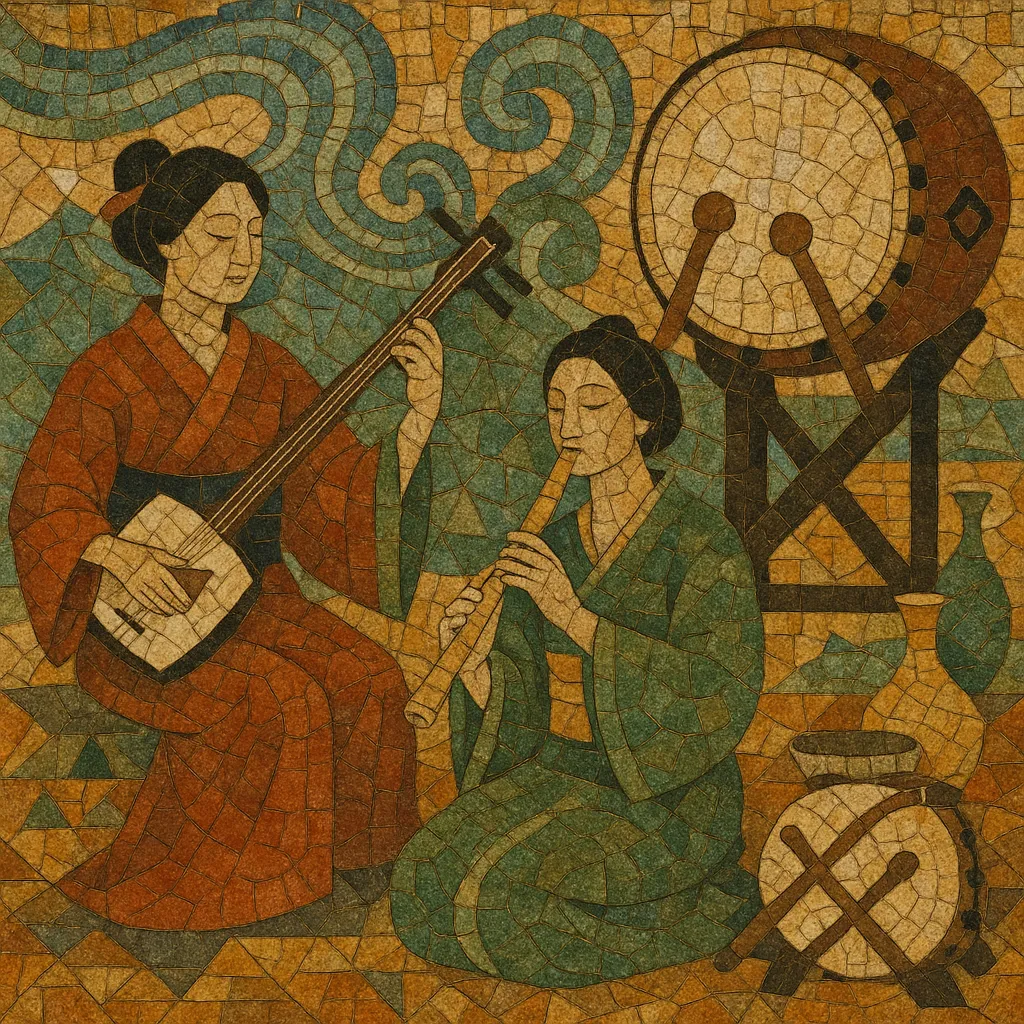Japanese music is a broad umbrella that spans ancient court and religious traditions, regional folk repertoires, and a vast spectrum of modern popular and experimental styles. Its aesthetic is often defined by timbral nuance, the expressive use of silence (ma), flexible rhythm, and modal pitch collections distinct from common-practice Western harmony.
Core traditional streams include gagaku (imperial court music), shōmyō (Buddhist chant), noh and kabuki theater music (e.g., nagauta), and min'yō (folk song). Instruments such as the koto, shamisen, shakuhachi, biwa, and various taiko drums shape its signature sound. Since the Meiji period, Western classical, band, jazz, rock, electronic, and hip-hop idioms have been localized into uniquely Japanese forms—from kayōkyoku and enka to city pop, J-pop, Vocaloid, and game/anime music.
Japanese music coalesced during the Nara and Heian periods with gagaku (imperial court music) drawing on Chinese yayue and Korean aak, alongside indigenous ritual and folk practices. Buddhist transmission introduced shōmyō chant, whose vocal monody and modal systems profoundly shaped sacred sound.
The Muromachi and Edo eras saw flourishing theatrical forms—noh with hayashi ensembles, later kabuki with nagauta—plus narrative traditions (joruri) with shamisen accompaniment. Regional min'yō styles diversified, while instrumental lineages for koto, shamisen, shakuhachi, and biwa refined pedagogy and repertoire.
The Meiji Restoration brought Western classical music, military/band traditions, solfège, and harmony into schools and public life. Popular urban song (kayōkyoku) synthesized Japanese lyricism with Western forms, while recording and radio expanded nationwide listening.
Occupation-era jazz, big band, and crooning fed kayōkyoku and enka. From the 1970s–80s, rock and new wave merged with synths and studio craft; city pop distilled cosmopolitan grooves and hi-fi production. Pioneers in electronic and experimental music (e.g., YMO, Takemitsu’s post-war modernism) gained global stature.
J-pop, visual kei, and idol systems professionalized songwriting and choreography. Anime/VTuber/Vocaloid ecosystems integrated composition, character IP, and online platforms. Game music fostered sophisticated melodic/rhythmic design. Today’s landscape spans heritage revival (gagaku/taiko), avant-garde electronics, underground rock, and chart pop—rooted in Japanese aesthetics yet networked globally.


